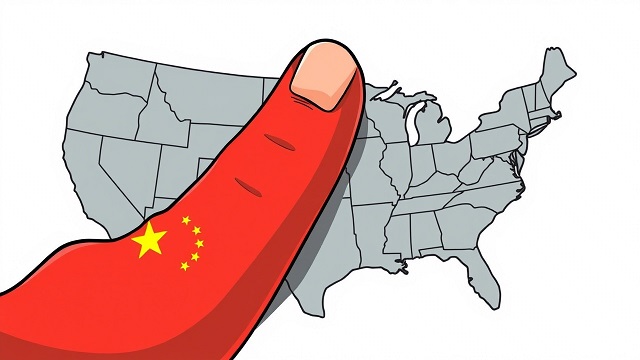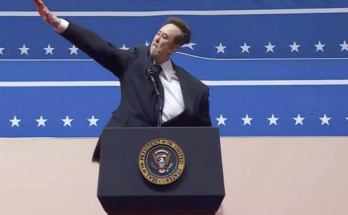The U.S.-China trade war, ongoing since 2018, has entered its seventh year with escalating confrontations. In April 2025, the Trump administration announced imposing 104% tariffs on all Chinese goods, marking a new phase in the trade war. Facing America’s maximum pressure tactics, China has not retreated but instead implemented a series of precise countermeasures across multiple fronts—economic, financial, technological, and diplomatic. This article provides an in-depth analysis of China’s strategic path to defeating the U.S. in the trade war, including targeting American political vulnerabilities, controlling critical supply chains, accelerating de-dollarization, technological self-sufficiency, and building a global anti-U.S. trade alliance. Additionally, we explore how China is enhancing its resilience through domestic market expansion and industrial upgrading, ultimately gaining the upper hand in this global economic power restructuring.
Targeting American Political Vulnerabilities: Turning Tariff Retaliation into an Election Weapon
China’s counterattacks in the trade war are not blind tariff impositions but precisely aimed at politically sensitive U.S. industries, particularly those affecting key swing states in elections. This strategy maximizes domestic political costs for the U.S., forcing Washington to reassess the sustainability of its hardline China policies.
Agriculture: Striking at Trump’s Base
China understands the pivotal role of agricultural states in U.S. presidential elections. In 2016 and 2020, states like Iowa and Wisconsin were crucial to Trump’s victories. Thus, China has focused its retaliation on agricultural products such as soybeans, pork, and corn:
- Soybean tariffs surged from 3% to 37%, causing U.S. soybean exports to China to plummet and farm incomes to drop sharply.
- Pork import restrictions hit Midwestern hog-farming states, traditionally Republican strongholds.
- Adjustments to corn ethanol policies impacted the biofuel industry, further squeezing agricultural profits.
These measures quickly produced political effects. According to the American Farm Bureau Federation, U.S. farm bankruptcy rates in 2024 hit a ten-year high, with farmers’ support for Trump declining significantly. Through this “fighting to promote peace” approach, China successfully created powerful anti-trade war lobbying pressure within the U.S.
Energy: Choking the U.S. Shale Revolution
The U.S. shale oil industry is central to Trump’s “energy dominance” strategy, and China was once the second-largest buyer of U.S. liquefied natural gas (LNG). China’s countermeasures include:
- Imposing 25% tariffs on U.S. LNG, depriving American energy companies of their largest growth market.
- Turning to alternative suppliers like Russia and Qatar, reshaping global energy trade flows.
- Supporting domestic coal-to-gas technology to reduce long-term reliance on U.S. energy.
These actions not only hurt U.S. energy exports but also impacted the economies of energy-rich states like Texas and Pennsylvania—key regions for Republican electoral success.
Manufacturing: Dividing the U.S. Business Camp
China has also skillfully imposed import restrictions on Boeing aircraft, automobiles, and chemical products, affecting the interests of U.S. multinational corporations:
- Reducing Boeing orders in favor of Airbus planes, hitting employment in Washington and South Carolina.
- Increasing tariffs on auto parts, impacting the automotive industry in the Rust Belt.
- Limiting specialty chemical imports, affecting chemical hubs like Delaware.
These measures sparked strong reactions in the U.S. business community, with companies like Boeing and General Motors pressuring the government to ease trade tensions. Through this divide-and-conquer strategy, China successfully formed an anti-trade war coalition of agriculture + energy + manufacturing, significantly weakening Trump’s political foundation.
Table: China’s Tariff Countermeasures Against Key U.S. Industries and Their Political Impact
| Target Industry | Key Measures | Affected Regions | Political Impact |
|---|---|---|---|
| Agriculture | Soybean tariffs up to 37%, pork restrictions | Iowa, Wisconsin, etc. | Declining farmer support, Republican base weakening |
| Energy | 25% LNG tariffs, reduced purchases | Texas, Pennsylvania | Energy lobby pushes for policy change |
| Manufacturing | Boeing order cuts, auto parts tariffs | Washington, Michigan | Corporations pressure White House for compromise |
| Technology | Rare earth controls, semiconductor restrictions | California, Arizona | Silicon Valley demands stable supply chains |
This precision-targeting strategy reflects China’s asymmetric counterstrike mindset—instead of engaging in a direct tariff war with the U.S., it focuses on areas with the greatest political and economic leverage. This approach has proven more effective than simple tit-for-tat retaliation.
Controlling Critical Supply Chains: How China Uses Rare Earths and Manufacturing Dominance to Strangle the U.S.
In the U.S.-China trade war, China’s most powerful weapon is not tariffs but control over global critical supply chains. Through export controls on rare earths, electronic components, and pharmaceutical ingredients, China has given the U.S. tech and defense industries a taste of being “choked.” This strategy of weaponizing supply chains is far more damaging than a tariff war.
Rare Earths: China’s “Trump Card”
Rare earth elements are essential for producing fighter jets, electric vehicles, smartphones, and wind turbines, and China controls 80% of global rare earth supplies. As the trade war escalated, China quickly played this card:
- In 2024, it imposed export controls on gallium and germanium, crucial for semiconductor production.
- In 2025, it expanded controls to neodymium and dysprosium, directly impacting U.S. EV and defense manufacturing.
- Established rare earth export quotas, prioritizing domestic demand and friendly nations.
These measures had immediate effects: Lockheed Martin warned that rare earth shortages could delay F-35 fighter deliveries, and Tesla adjusted production plans due to tight supplies of rare earth magnets. Through this leverage, China successfully transferred trade war pressure to the core of U.S. high-tech and defense industries.
Electronics Supply Chain: From Low-End Assembly to Core Control
Once seen as merely the “world’s factory” for low-end assembly, China has quietly taken control of key links in the electronics supply chain:
- Printed circuit boards (PCBs): China produces over 50% globally, and U.S. defense contractors rely on Chinese PCBs.
- LCD modules: BOE and TCL CSOT have broken South Korea’s monopoly to become major global suppliers.
- Lithium battery materials: China controls 70% of global lithium processing, dominating the EV battery supply chain.
When the U.S. banned chip exports to China, China retaliated by restricting epoxy resin copper-clad laminates, a PCB base material almost exclusively produced in China. U.S. defense contractors suddenly realized that even with American chips, they couldn’t produce complete electronic systems without Chinese components.
Pharmaceutical Supply Chain: A Hidden Trump Card
Few realize that China has become the global hub for active pharmaceutical ingredients (APIs), supplying 80% of U.S. antibiotic ingredients. At the height of the trade war, China hinted at restricting key pharmaceutical intermediates, sparking panic in the U.S. healthcare system. This potential “drug cutoff” risk forced the U.S. to compromise on tariffs for certain medical products.
Table: China’s Control of Critical Supply Chains and Impact on the U.S.
| Key Sector | China’s Global Share | Control Measures | Impact on U.S. Industries |
|---|---|---|---|
| Rare Earths | 80% mining, 90% processing | Gallium/germanium export licenses, rare earth quotas | Defense, EV production disrupted |
| Electronics | 50% PCBs, 35% display panels | High-end PCB export reviews, LCD priority for domestic use | Consumer electronics, defense systems delayed |
| Pharmaceuticals | 80% antibiotic APIs | Option to restrict key ingredients | Drug shortage fears forced concessions |
| Battery Materials | 70% lithium processing, 65% cathodes | Graphite export controls, processing tech limits | EV industry at China’s mercy |
The Art of Supply Chain Warfare
China has employed supply chain weapons with highly strategic precision, unlike America’s blanket bans:
- Surgical strikes: Only restricting a few categories critical to U.S. industries, not full embargoes.
- Plausible deniability: Using “national security” or “environmental standards” as justification rather than openly admitting trade retaliation.
- Differentiated treatment: Giving leeway to U.S. firms operating in China while strictly limiting purely American companies, dividing the U.S. business community.
This approach achieves pressure effects without triggering global supply chain collapse, demonstrating China’s strategic restraint and tactical sophistication in the trade war. By controlling critical supply chain nodes, China has escalated the trade war from a simple tariff conflict to a battle for global industrial dominance—gradually gaining the upper hand.



